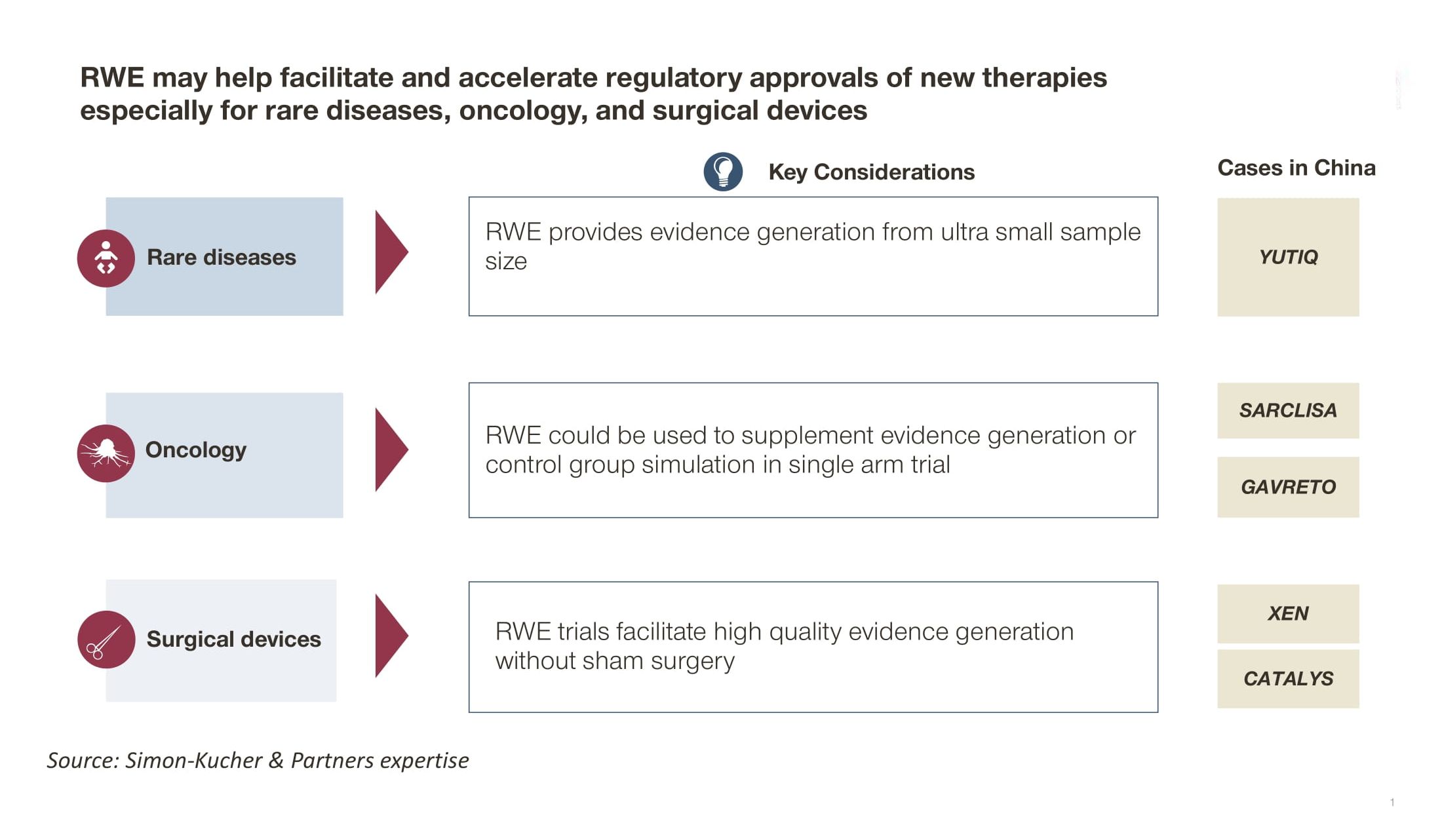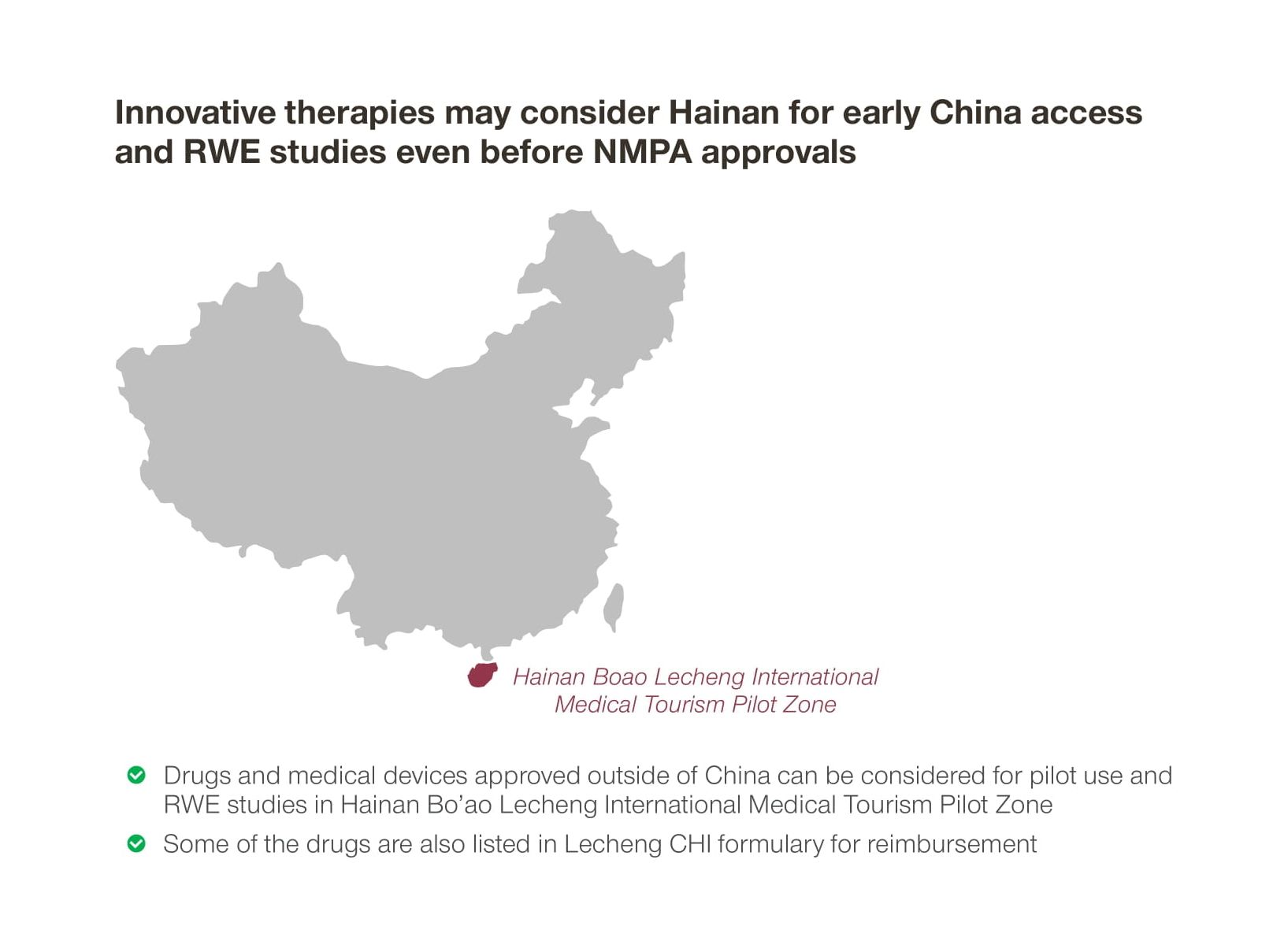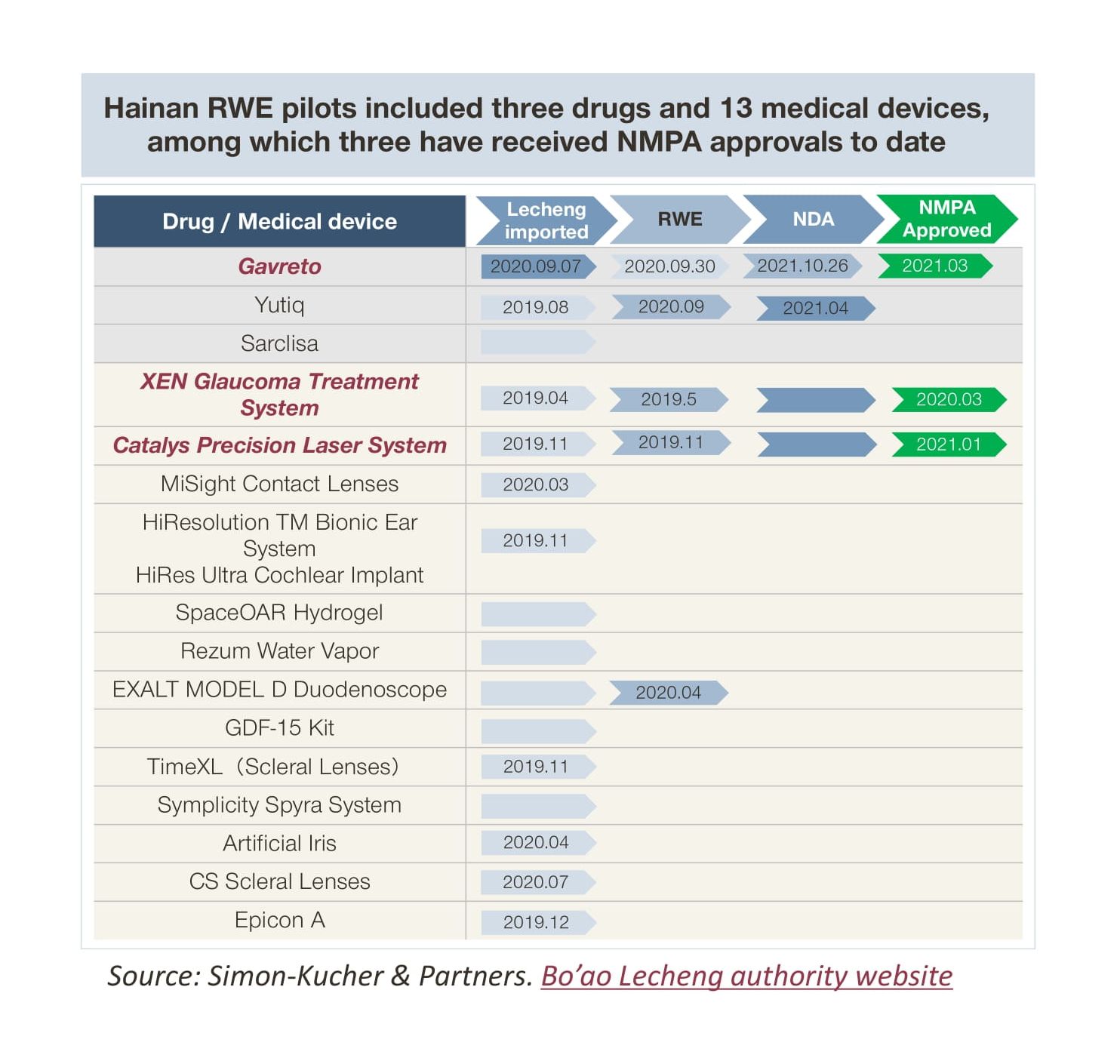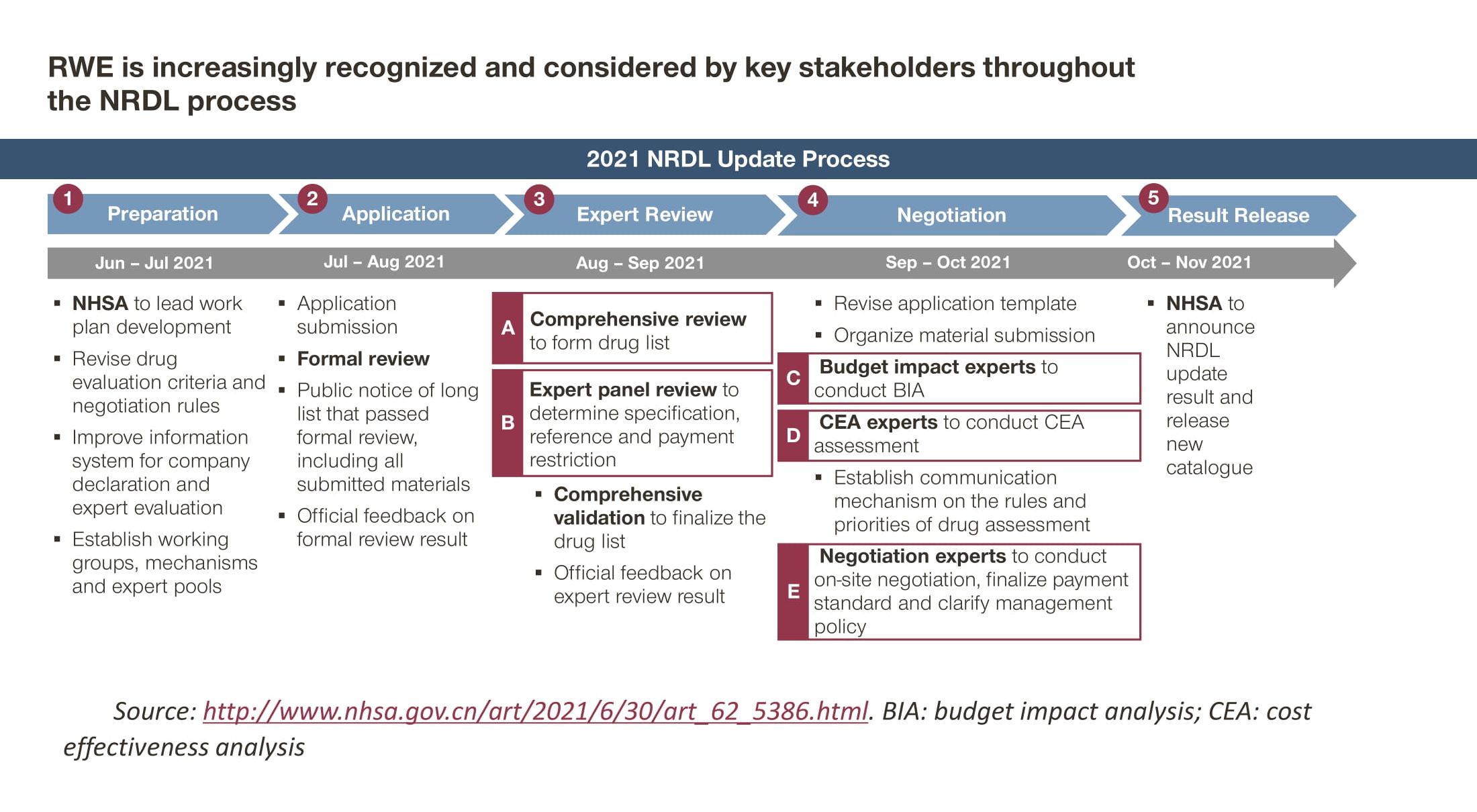Real-World Evidence Is Becoming a Pivotal Component in Chinese Healthcare
Its use enables key processes such as early access, regulatory approval, and reimbursement listing.
Real world evidence (RWE) is playing an increasingly important role in China, ranging from early access and regulatory approval to reimbursement listing and commercialization.This information is obtained from real world data (RWD) beyond randomized controlled trials (RCTs). At the same time, it can add to RCTs for evidence-based therapies.
Over the past decade, RWE has been increasingly recognized for its value in many markets, but in China this is a far more recent phenomenon. In September 2019, Hainan Boao launched its RWE pilot program in China’s first International Medical Tourism Pilot Zone. The following year, the National Medical Product Administration (NMPA) released its “Guidelines for RWE Supporting Drug Development and Review,” followed by the “Technical Guidelines for Real-World Research Supporting Pediatric Drug Development and Evaluation” from the Center for Drug Evaluation (CDE), supporting and standardizing RWE studies for pediatric drug development. Shortly after, the NMPA issued its “Technical Guideline on RWD Used in Medical Device Clinical Evaluation (Trial Implementation),” clarifying specific RWE requirements for medical device registration. Then in April 2021, the NMPA issued its “Guidelines for RWD Used in Generating RWE,” standardizing the data sources for RWE studies.
In all these guidelines, the NMPA and the CDE highlighted specific circumstances for which RWE could bring unique value to the development and approval process:
- RWE studies allow for greater flexibility in patient recruitment and trial design for diseases with small patient populations and scattered cases like rare diseases.
- For infantile diseases, or life-threatening diseases with rapid disease progression, RWE studies offer timely treatments of trial therapies when control group enrollment may not be ethical.
- For certain surgical medical devices that are technically difficult to perform RCTs, RWE studies afford alternatives to sham surgeries for efficacies and safety evidence.

RWE pilots gather momentum to achieve early access and regulatory approvals in China
As the RWE pioneer, the province of Hainan forged ahead with the first batch of RWE pilots, including three drugs and 13 medical devices that were new to China, which has resulted in three NMPA approvals so far. Gavreto, a RET-targeting NSCLC drug, was approved and marketed in China nine months after its FDA approval. The RWE study in Hainan played no small part in that, as it provided the single-arm trial Gavreto was conducting in China with supporting evidence. As the poster children for innovative medical devices, Allergan's XEN Glaucoma Treatment System and Johnson & Johnson’s Catalys Precision Laser System received China approvals.


The Medicine Connect Program is the Greater Bay Area’s answer to Hainan pilots. It gives early access and RWE opportunities to one of China’s most populous and affluent regions, as innovative therapies approved in Hong Kong or Macau may apply for pilot use within the Greater Bay Area, and RWE studies can be conducted in parallel.
The latest policy guidance on the Shenzhen Pilot Zone launched on Jan. 26, 2022, from the National Development and Reform Commission (NDRC) and Ministry of Commerce highlighted support for RWE applications throughout product life cycles of innovative therapies. This included data collection prior to regulatory approval, as well as label changes, safety studies, and monitoring post-market authorization.
In particular, the policy singled out therapies for clinically urgent needs, rare diseases, and traditional Chinese medicines. The goal is to accelerate approval, launch, commercialization, and clinical utilization through RWE.
Some other regions and free trade zones across China have also been exploring early access and RWE in the same spirit. Shanghai for example, has released its own policy guidance to open up the Pudong Free Trade Zone for early access and RWE research, and prioritized cell and gene therapies as a major area of focus.
RWE has become more important in China’s reimbursement listing and commercialization
RWE would help payers better assess different aspects of innovative therapies. This is because data comes from real-world settings such as electronic health records, disease registries, as well as claims and billing data. As such, payers can assess clinical profiles, long-term outcomes, social economics, and budget impact considerations.
For many city commercial health insurances (CHIs), which have mushroomed in around 200 cities in China over just the past couple years, RWE could serve as an important value dossier component for payers and stakeholders at the local level. More importantly, RWE has been seen as playing a key role in the NRDL process, as we noted in our earlier Pharm Exec articles—China 2021 National Reimbursement Drug ListOutlook and China 2021: The NRDL Readout.
For example, Darzalex, a therapy for relapsed and refractory multiple myeloma (launched in China in 2019), was included in the 2021 NRDL, after a failed attempt the previous year. Its success was largely due to a fortified value dossier, including RWE from over 30 city CHIs, demonstrating its clinical value and extended duration of treatment with CHI coverage.
From our ongoing dialogues with NRDL stakeholders, China-specific RWE and its implications on cost-effectiveness and budget impact have been highlighted as one of the keys for reimbursement decisions going forward.

Strategic foresight and early preparation are essential to maximizing RWE impact
Pharma and medtech companies would first need to plan ahead and embed RWE in their access strategy and dossier preparation, and proactively communicate with national and local stakeholders to define the clear roles for RWE in access, approval, reimbursement, and commercialization processes.
Secondly, companies would need to contribute to the ongoing buildup of China RWE infrastructure, improve data quality, and help shape RWE standards and best practices in China.
Finally, it is paramount to have the “patient-centric” mindset and leverage RWE as a tool toward addressing unmet needs, bringing real benefits to patients and real impact to society, and in doing so, unlocking the real value of RWE in China.
As RWE gains increasing prominence in China, pharma and medtech majors will need to better assess the country’s RWE opportunities, contribute to its ongoing developments, and make it an integral part of growth strategy in China and beyond.

Bruce Liu leads Simon-Kucher’s life sciences practice in Greater China; Justinian Liu is a senior consultant with years of experience in China’s pharmaceutical industry; Selene Peng and Wolfgang Liang are experienced consultants specializing in China’s market access strategy for innovative therapies.
Addressing Disparities in Psoriasis Trials: Takeda's Strategies for Inclusivity in Clinical Research
April 14th 2025LaShell Robinson, Head of Global Feasibility and Trial Equity at Takeda, speaks about the company's strategies to engage patients in underrepresented populations in its phase III psoriasis trials.
Expanding Immune Response Testing to Support Vaccine Development
April 22nd 2025Nigel McCracken, chief operating officer, Virax Biolabs, discusses the expansion of its ViraxImmune platform into areas such as transplant monitoring, vaccine efficacy, latent virus reactivation, and CAR T cell therapy.